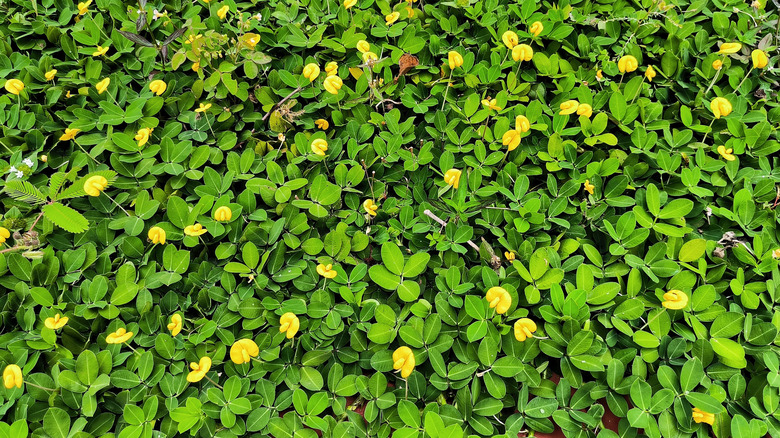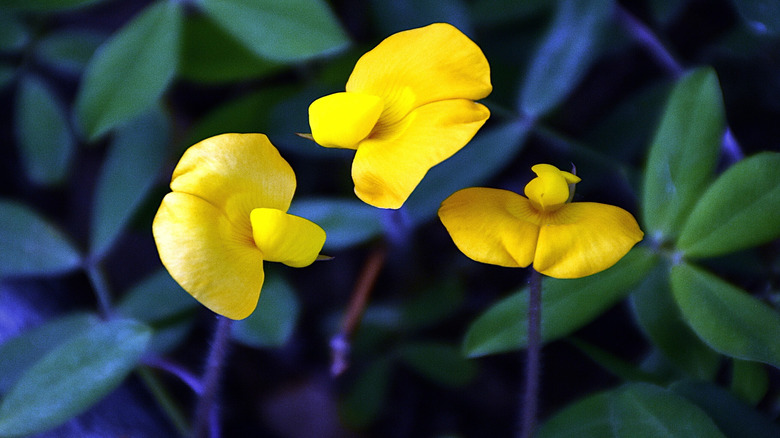Perennial Peanut Is The Colorful Grass Alternative You Need To Add To Your Lawn
Many people are starting to learn about the potential negative environmental impact of turfgrass lawns, and they're seeking more sustainable alternatives. One fantastic option for homeowners in warmer climates is the beautiful perennial peanut, either the Arachis glabrata or Arachis pintoi varieties. Not only do perennial peanuts create a stunning lawn full of charming yellow flowers, but they are also quite drought tolerant. And because they are nitrogen fixers, they rarely need fertilizer and can even improve the soil for any other plants growing near them.
Sadly, most much of the United States does not have the right climate for growing perennial peanuts. Arachis glabrata is hardy in zones 8b and up, while Arachis pintoi is only hardy in zones 9 and up. So growers in colder zones will have to find a different ground cover plant to replace their turf lawns.
But for many southern growers who are tired of their Bermuda and zoysia grass lawns, perennial peanuts can be great lawn alternatives in yards with full sun to part shade. They can even grow intermixed with grass, helping to keep it healthier with less work on your part.
Caring for your perennial peanut lawn
When buying perennial peanuts for your yard, be sure to purchase a low-growing variety like 'Needlepoint,' as taller cultivars also exist. Perennial peanuts are generally sold as plugs of young plants to be used as ground covers. You may need to purchase quite a few to create your lawn, as you'll need to install about one plant per 12 to 18 inches. Mulch between the plants to keep weeds at bay while your perennial peanuts get established. And be patient, as they can take a year or two to fully fill out your new lawn as a full grass alternative.
Even though perennial peanuts are drought tolerant once they are fully grown, they do need regular watering when they are young. And while established plants can handle light foot traffic, they aren't the right turf option for high-traffic areas.
Don't be afraid to mow your perennial peanut lawn every few months once it has filled out, though. This will help it form mats that prevent weed growth and encourage the plants to flower more. Just be sure to set the height on your lawn mower to around 4 or 5 inches.

